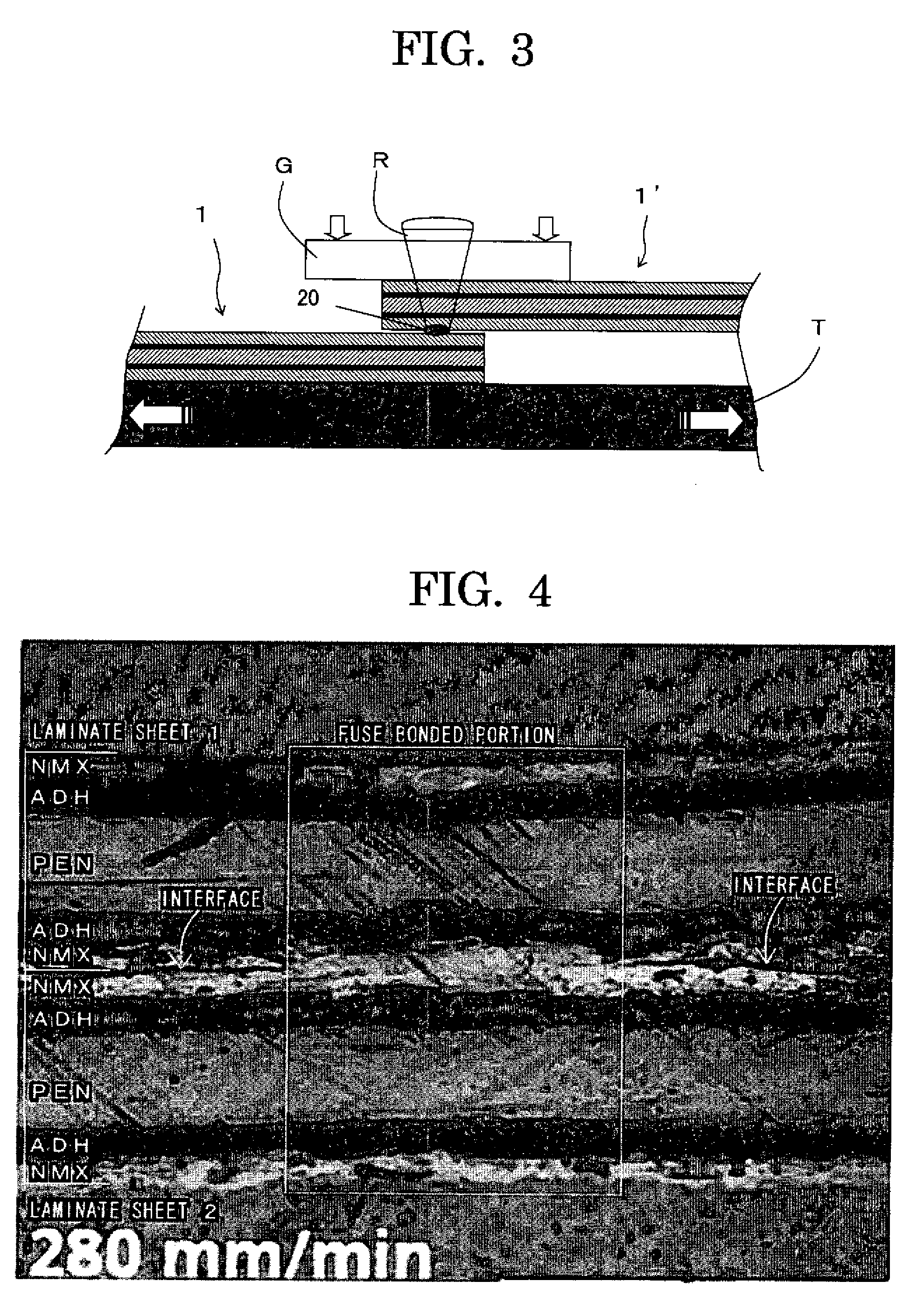Resin joined body
a technology of resin and body, applied in the field of resin joined body, can solve the problems of difficult to generate sufficient heat energy, heat developing on the rear side of the resin member, etc., and achieve the effects of suppressing the possibility, reducing light transmittance, and suppressing the deterioration of aesthetic appearan
- Summary
- Abstract
- Description
- Claims
- Application Information
AI Technical Summary
Benefits of technology
Problems solved by technology
Method used
Image
Examples
example 1
[0056]A resin joined body of Example 1 was manufactured by using the following laser beam irradiation device.
(Laser Beam Irradiation Device Used in this Example)
[0057]Laser source: Semiconductor laser
[0058]Laser wavelength: 1490 nm
[0059]Maximum output: 15 W
[0060]Two laminate sheets each having the following structure were used for manufacturing the resin joined body.
(Structure of a Laminate Sheet)
[0061]Five-layer structure of “aramid paper / adhesive / PEN film / adhesive / aramid paper”
[0062]The absorption constant of 1490 nm for the material and the thickness, of the respective layers was measured by using a spectrophotometer (trade name LAMBDA-9, manufactured by PerkinElemer). The results are shown below.
[0063]Aramid paper: (trade name NOMEXPAPER, manufactured by DuPont (thickness: 55 μm), absorption constant: 1081 m−1)
[0064]Adhesive: (acrylic adhesive (thickness: 30 μm), absorption constant: 360 m−1)
[0065]PEN film: (thickness: 125 μm, absorption constant: 94 m−1)
[0066]The absorption con...
example 2
[0072]A resin joined body was manufactured in the same manner as Example 1, except that the resin joined body was formed by laminate sheets each using an aramid paper having a thickness of 100 μm.
[0073]The shear strength of this resin joined body as measured was about 20 N (667 N / cm2), and it was found that an excellent joining strength was obtained.
PUM
 Login to View More
Login to View More Abstract
Description
Claims
Application Information
 Login to View More
Login to View More - R&D
- Intellectual Property
- Life Sciences
- Materials
- Tech Scout
- Unparalleled Data Quality
- Higher Quality Content
- 60% Fewer Hallucinations
Browse by: Latest US Patents, China's latest patents, Technical Efficacy Thesaurus, Application Domain, Technology Topic, Popular Technical Reports.
© 2025 PatSnap. All rights reserved.Legal|Privacy policy|Modern Slavery Act Transparency Statement|Sitemap|About US| Contact US: help@patsnap.com



